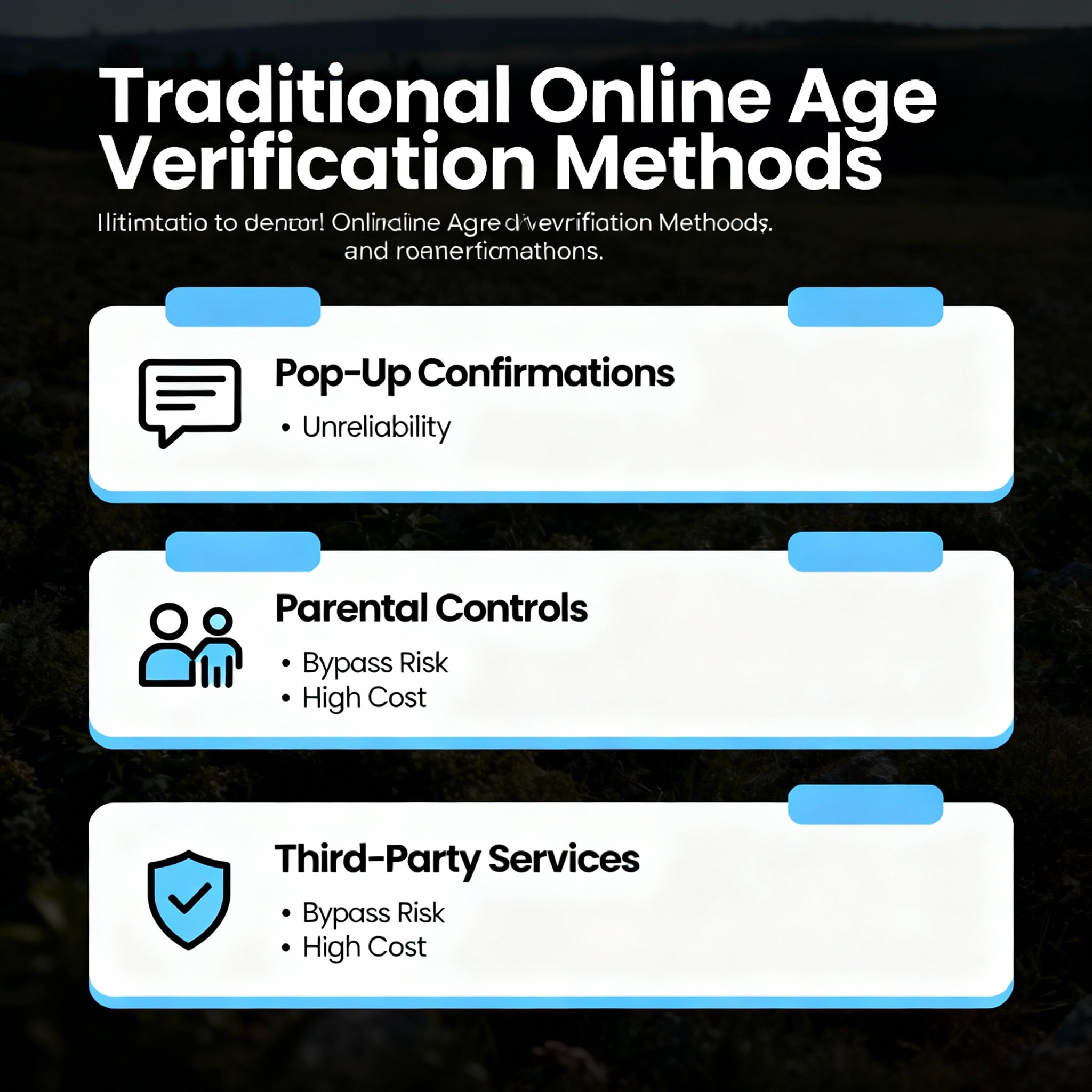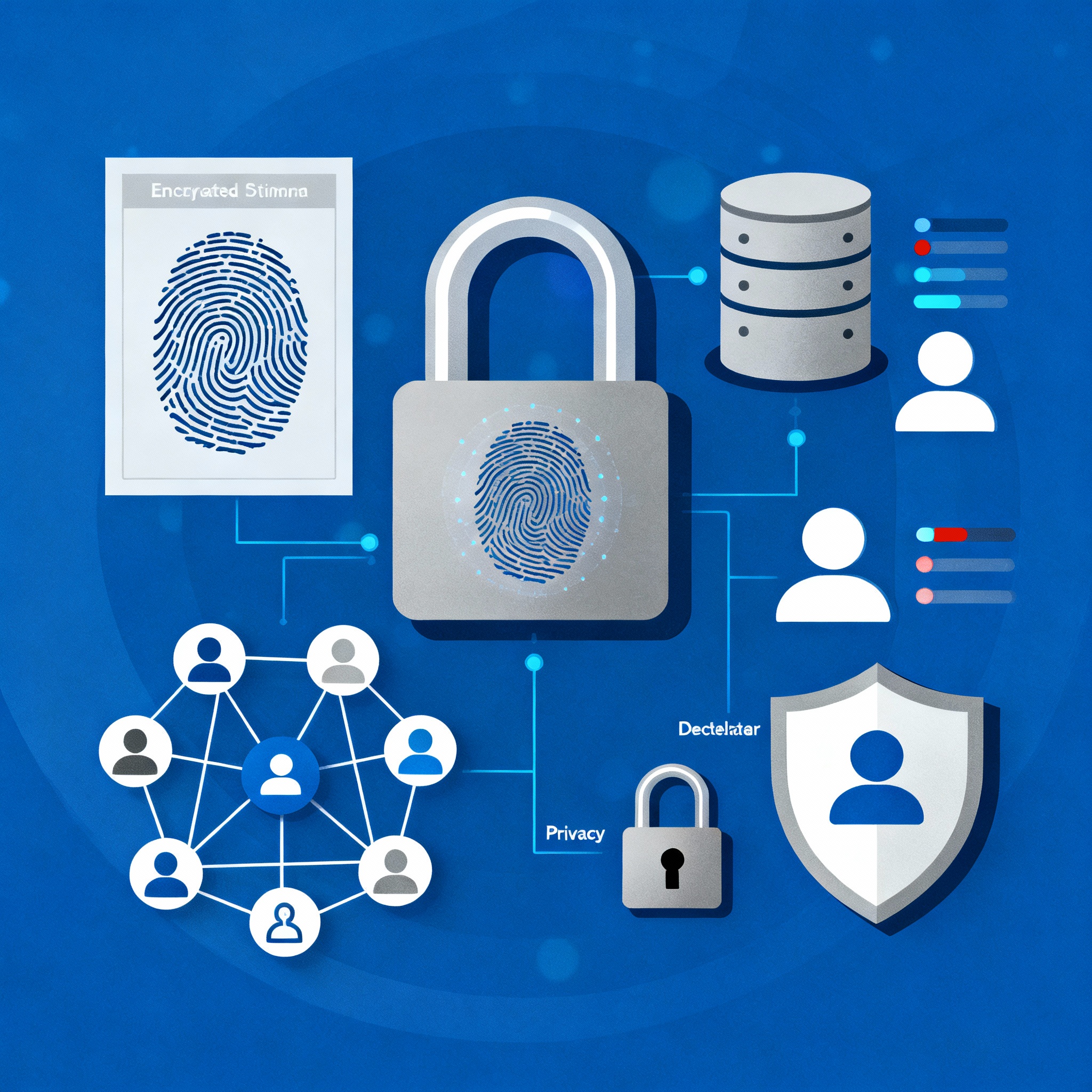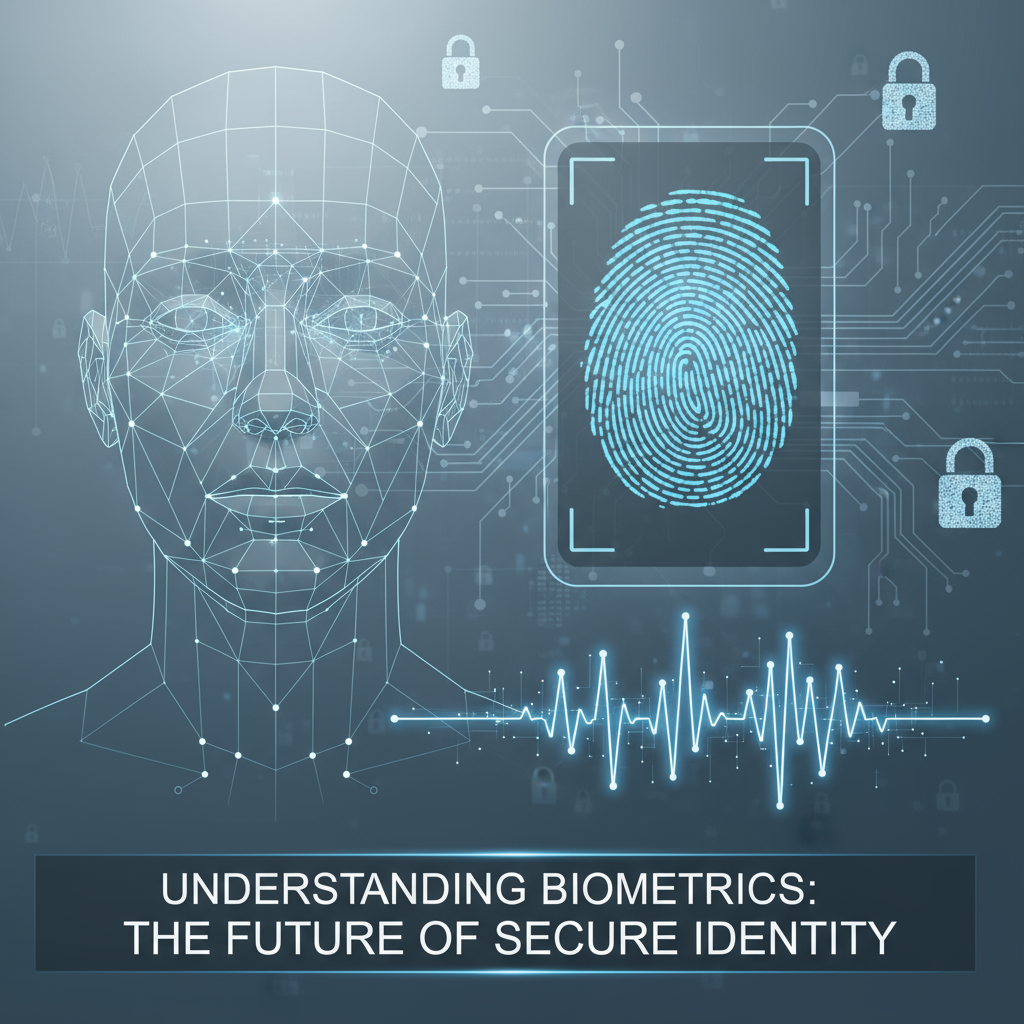Summary
Online age verification is becoming increasingly important to protect minors from adult content and other age-restricted online services. Traditional verification methods such as self-reported age or parental controls are often ineffective. Biometrics, including facial recognition, fingerprints, palm prints, and voice authentication, provide a faster, safer, and more accurate solution. This blog explores how biometrics work for age verification, their privacy and security considerations, deployment strategies, user convenience, adoption, and future developments in digital identity.
The Need for Online Age Verification
With the internet’s vast reach, access to adult content has become easier than ever. Governments across the world are introducing laws that require websites to verify users’ ages before granting access to adult or age-restricted content. For instance, countries like the U.S., Australia, and several EU nations have enforced regulations targeting online platforms to protect minors. Companies such as Pornhub have responded by restricting access in certain regions to comply with these laws.
Traditional approaches like self-reported age checks are insufficient. When a user clicks “I am over 18” on a pop-up, there is no actual verification, making the system vulnerable to misuse. Parental controls are another approach, but tech-savvy minors often find ways to bypass these restrictions.
Online age verification ensures that only legally eligible users access age-restricted content. Failure to implement effective systems may result in legal penalties, reputational damage, and harm to minors.
Traditional Age Verification Methods and Their Limitations

Traditional methods of age verification include:
- Pop-Up Confirmations: Users are asked to declare their age by clicking a checkbox. This method relies entirely on trust, making it highly unreliable. Minors can easily bypass it, rendering it ineffective.
- Parental Controls: These tools allow parents to restrict access to certain content. While somewhat effective, they require constant supervision and technical knowledge from parents.
- Third-Party Verification Services: Companies may rely on external providers to verify age using publicly available or transactional data. Although more secure, these systems are often expensive, slow, and difficult to scale.
Traditional methods lack reliability, are prone to abuse, and often fail to comply with evolving legal requirements. Businesses seeking better user adoption of new technologies must explore more effective solutions like biometrics.
Also Read:Optimizing Biometric Algorithms for Large-Scale Law Enforcement Applications
Introduction of Biometrics in Age Verification
Biometrics use unique biological or behavioral characteristics to identify individuals. Common biometric modalities include:
- Facial Recognition: Maps a user’s facial features for verification.
- Fingerprints and Palm Prints: Captures unique ridge patterns on the skin.
- Voice Recognition: Analyzes voice patterns and speech characteristics.
Biometric systems can also integrate geofencing to enforce local age verification laws. Document verification features ensure that users’ provided identity documents are valid and belong to the person attempting verification.
Biometrics offer a precise, scalable, and efficient solution for online age verification. They reduce the risk of fraud while enhancing the user experience.
Privacy and Security Concerns

Collecting biometric data introduces privacy risks. Unlike passwords, biometric traits cannot be changed if compromised. To protect users, organizations implement:
- Decentralized Storage: Data is stored locally on devices instead of central servers to minimize large-scale breaches.
- Template Encryption and Hashing: Biometric data is converted into encrypted templates, preventing misuse.
- Role-Based Access: Only authorized personnel can access sensitive data.
- Temporary Processing: Biometric data is used for verification and deleted immediately afterward.
For example, the Transportation Security Administration (TSA) uses temporary processing in their pre-check identity verification. By combining these methods, businesses can ensure that biometric verification systems are secure and privacy-compliant.
Properly implemented, biometrics can provide strong security while minimizing privacy risks, building trust among users.
Spoof-Proof Technology and Liveness Detection
A major challenge in age verification is preventing minors from bypassing the system with fake IDs or photos. Spoof attempts involve presenting images, videos, or documents that do not belong to the user. Modern biometrics combat this through liveness detection, which verifies that the user is physically present.
- Facial Liveness Detection: Observes natural movements such as blinking, smiling, or subtle head tilts. Static images or videos fail these tests.
- Voice Liveness Detection: Analyzes speech patterns, tone, and inflection to ensure authenticity.
Liveness detection makes biometric verification robust and prevents fraud. This increases user trust in the system and ensures only legitimate users are verified.
Cost and Speed of Deployment
Biometric systems were once accessible only to organizations with substantial resources. Today, cloud-based SaaS solutions allow any business to deploy biometric age verification rapidly. Plug-ins and APIs enable integration with websites, mobile apps, and digital platforms in minutes, eliminating heavy upfront investment.
Cloud-based biometrics reduce deployment costs, making age verification feasible for organizations of all sizes while improving operational efficiency.
Convenience and Consumer Adoption
Users increasingly prefer biometric authentication due to its speed and ease. Surveys show that over half of consumers regularly use biometrics, and nearly 50% access apps with biometrics “often” or “always.” Convenience factors include:
- No need to remember passwords
- Fast authentication, typically in milliseconds
- Reliability and ease of use
Even if users initially have privacy concerns, the convenience of biometrics often outweighs trust issues, resulting in higher adoption rates and satisfaction.
Biometrics provide a seamless experience, increasing user adoption of new technology while ensuring security.
Blockchain-Based and Decentralized Digital Identity Platforms
Decentralized platforms like Concordium, Civic, and PrivadoID offer age verification without revealing sensitive data. Zero-Knowledge Proofs (ZKP) allow users to confirm age without exposing personal information. Key benefits include:
- Privacy: Users prove eligibility without disclosing raw data.
- Compliance: Systems meet legal age verification requirements.
- Decentralization: Reduces risk of data breaches and misuse.
Unlike centralized Web2 solutions (Yoti, Microsoft Entra Verified ID), blockchain platforms maintain user sovereignty while ensuring verification is accurate and legally compliant.
Decentralized digital identity platforms combine privacy, security, and compliance, offering a future-ready solution for online age verification.
Challenges Ahead for Biometrics in Age Verification
Despite their advantages, biometric systems face challenges:
- Privacy Concerns: Adult content platforms may struggle to gain user trust for collecting biometric data.
- Regulatory Uncertainty: Laws differ across states and countries, making compliance complex.
- User Education: Users need clear communication on how their data is protected and how biometrics improve the verification process.
Organizations must address these issues to ensure high adoption rates and maintain credibility.
Addressing privacy, compliance, and education challenges is essential for successful implementation of biometric age verification.
Future Outlook
Biometrics are poised to become the standard for online age verification. Emerging technologies, including blockchain-based identity solutions, promise privacy-preserving, fast, and secure verification systems. The future will likely see widespread adoption of biometrics across online services, balancing legal compliance, user trust, and convenience.
The adoption of biometrics ensures secure, fast, and reliable online age verification while empowering users with privacy and control over their personal information.
FAQs
What is online age verification?
Online age verification is a process that ensures users meet the minimum legal age before accessing certain websites or services.
Why is biometrics effective for age verification?
Biometrics use unique biological traits, making it difficult to falsify age or identity. Liveness detection further prevents spoof attempts.
Are biometric systems safe for privacy?
Yes. With decentralized storage, encryption, temporary data processing, and strict access control, biometric data is protected from misuse.
Can minors bypass biometric age verification?
Spoof attempts are possible, but liveness detection and document verification significantly reduce this risk.
How quickly can biometric age verification be implemented?
Cloud-based SaaS solutions allow deployment within minutes, even for small websites or apps.
Do users trust biometrics?
Most users find biometrics convenient and reliable. Surveys show high adoption rates for mobile apps, banking, and device security.
What role do blockchain-based identity platforms play?
They allow verification without exposing sensitive data, maintaining privacy while ensuring legal compliance.
What are the main challenges of using biometrics for age verification?
Challenges include privacy concerns, legal variations, and the need to educate users about data security.
Conclusion
Online age verification is critical for protecting minors and complying with laws. Traditional methods fail to provide sufficient security and reliability. Biometrics, combined with liveness detection, blockchain identity platforms, and decentralized data storage, provide fast, secure, and convenient verification.
By addressing privacy concerns, educating users, and adopting modern technology, organizations can ensure successful implementation. Biometrics promise a future where online age verification is accurate, secure, and widely adopted, protecting both users and businesses.
Debabrata Behera is a passionate blogger who writes about digital trends, personal growth, and practical insights, helping readers stay informed, inspired, and ready to achieve success in life.




